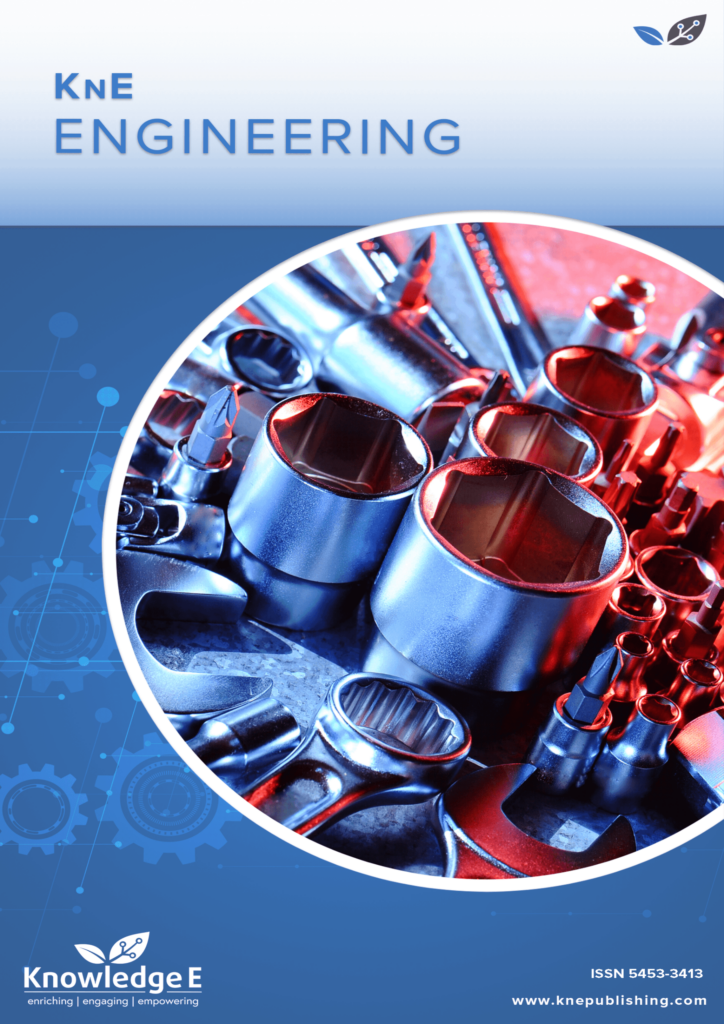
KnE Engineering
ISSN: 2518-6841
The latest conference proceedings on all fields of engineering.
Strength Development and Pore Structure Characterisation of Binary Alkali-activated Binder Based on Tungsten Mining Waste
Published date: Apr 13 2020
Journal Title: KnE Engineering
Issue title: REMINE International Conference on Valorization of Mining and Industrial Wastes into Construction Materials By Alkali-activation
Pages: 73–85
Authors:
Abstract:
The mineralogical properties of tungsten mining waste mud (TMWM) make its valorisation and re-usage as an alumino-silicate source material to produce an alkali-activated binder without calcination is a challenge. Moreover, the dissolution of silicate and alumina species from TMWM is very slow. Despite the crystallinity of TMWM, this study demonstrates that its combination with other sources of the alumino-silicate source was the materials–such as red clay brick waste(RCBW),ground granulated blast furnace slag (GGBFS) and electric arc furnace slag (EAFS) – improved the compressive strength and the pore structure of the alkali-activated matrix.Thecombinedprecursors (90 vt.%TMWM+10 vt.%RCBW, 90 vt.%TMWM+10 vt.%GGBFS, and 90 vt.%TMWM+10 vt.%EAFS) were activated using a combination of alkaline activator solutions (sodium silicate and sodium hydroxide) with the ratio of 1:3(66.6wt.%sodiumsilicatecombined with 33.33 wt.% of NaOH 10M). The results show that the compressive strength increased from11.23MPa at 28 days to reach 24.98MPawhentheTMWMwaspartially replacedby10vt.%RCBW. In addition,this study shows that the interconnected porosity decreased where the critical pore size was reduced from 21.28 µm to 0.55 µm for the tungsten mining waste-based alkali-activated binder and the binary alkali-activated binder based on TMWM and RCBW.
Keywords: Mining Waste, Alkali-activated, Microstructure, MIP, Metakaolin
References:
[1] Sedira, N., et al. (2017). A review on mineral waste for chemical-activated binders: mineralogical and chemical characteristics. Min. Sci., vol. 24, pp. 29–58.
[2] Wheeler, A. (2016). “Report NI 43-101 Technical Report On The Mineral Resources And Reserves Of The Panasqueira Mine, Portugal,” Almonty Industries, https://almonty.com/wp-content/uploads/2019/ 06/Panasqueira_43-101_Tech_Rep_Dec16_SEDAR.pdf. Accessed 10 Nov. 2019.
[3] Pacheco-Torgal, F., Castro-Gomes, J. and Jalali, S. (2009). Tungsten mine waste geopolymeric binder: Preliminary hydration products investigations. Constr. Build. Mater., vol. 23, pp. 200–209.
[4] Davidovits,P.J.(2002).“30YearsofSuccessesandFailuresinGeopolymerApplications.MarketTrends and Potential Breakthroughs,” Geopolymer 2002 Conference, October 28-29, Melbourne, Australia. pp. 1–16.
[5] Kastiukas G. and Zhou, X. (2017). Effects of waste glass on alkali-activated tungsten mining waste: composition and mechanical properties. Mater. Struct. Constr., vol. 50, issue 4, 2017.
[6] Sedira N. and Castro-Gomes, J. (2018). Study of an alkali-activated binder based on tungsten mining mud and brick powder waste. 8th Sci. Conf. Mater. Probl. Civ. Eng., vol. 06002, pp. 1–8.
[7] Sedira N. and Castro-Gomes, J. (2019). Effects of EAF-S on alkali-activation of tungsten mining waste: mechanical properties.REMINE-InternationalConference&BrokerageEvent(RICON17)-UBI,Covilha, Portugal, 2019, vol. 01003, pp. 1–6.
[8] Sedira N. and Castro-Gomes, J. (2018). Strength and microstructure of tungsten mining waste-based hybrid alkaline material : effect of activators. Proceedings of the 12th fib International PhD Symposium in Civil Engineering, 2018, pp. 145–152.
[9] Humbert, P. S., Castro-Gomes, J. P. and Savastano, H. (2019). Clinker-free CO 2 cured steel slag based binder: Optimal conditions and potential applications. Constr. Build. Mater., vol. 210, pp. 413–421.
[10] IUPAC (1972). Manual of symbols and terminology, appendix 2, part 1, Colloid and Surface Chemistry. Pure Appl. Chem., vol. 31.
[11] Sedira N. and Castro-Gomes, J. (2020). Effect of activators on hybrid alkaline binder based on tungsten mining waste and ground granulated blast furnace slag. Constr. Build. Mater., vol. 232, p. 117176.
[12] Sedira,N.,Castro-Gomes,J.andMagrinho,M.(2018).Redclaybrickandtungstenminingwaste-based alkali-activated binder: Microstructural and mechanical properties. Constr. Build. Mater., vol. 190, pp. 1034–1048.
[13] Katz A. J. and Thompson, A. H. (1987). Prediction of rock electrical conductivity from mercury injection measurements. J. Geophys. Res., vol. 92, pp. 599–607.